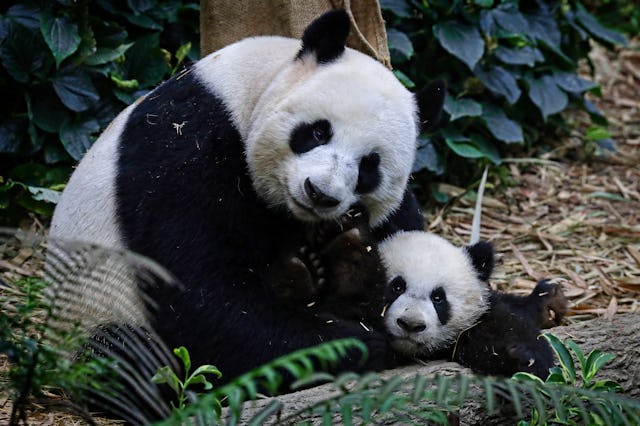What Is Panda Parenting? The New Child-Rearing Trend Explained
Can we learn something from our cute cuddly friends?

We all want our kids to grow up with a sturdy sense of independence, making healthy, thought-out decisions on their own once they leave the nest, but it can be hard to know how to help kids develop those kinds of instincts. It’s even harder for us to let go of the reins a bit and trust our kids to do it once we’re less involved in their lives.
Some parents are turning to a method called “panda parenting” to help navigate these tricky situations. Seems like maybe we can learn something from our cute and cuddly friends!
What is Panda Parenting?
Panda parenting, a term first coined by Esther Wojcicki in her book How to Raise Successful People: Simple Lessons for Radical Results, describes a parenting style that is hands-off and based on trusting your children to make their own decisions.
She coined the TRICK acronym, which stands for trust, respect, independence, collaboration, and kindness.
Panda parenting is twofold: parents work on strengthening the bond of trust between themselves and their child while also promoting independence. It’s all about trusting kids to make mistakes, learn from them, and be better for it in the end. Kind of like a softer version of “FAFO parenting.”
In panda parenting, parents play a background role when it comes to allowing their children to play and learn. For example, if your kid is being risky on the playground — scaling a wall or claiming on top of the monkey bars — you can watch your child, refrain from intervening, and trust your kid to handle their predicament on their own.
Panda parenting leans into allowing kids to explore on their own terms, rather than trying to control their every step. If they stumble, parents ensure they are a safe place for understanding and compassion. Panda parents support and nurture their kids above all else.
Traits Of A Panda Parent
While some may feel off about the idea of letting their kids figure things out on their own, deeming them lazy or absentee, Wojcicki writes that panda parents are quite the opposite, gathering her methods from panda moms themselves.
"Panda mums aren't lazy. What they do is give children scaffolding to let them go free. Instead of always intervening, you only help when they need it,” Wojcicki explains in her book.
Panda parents are encouraged to allow children to make their own decisions instead of hovering while working with their children to build gentle but firm boundaries that stem from a deeply trusting relationship.
Panda parents allow their children to try new things with active parental support—but without explicit permission. Panda parents are holding onto the reigns but loosely. They let their children work on figuring out their own without interference or guidance. However, if kids decide to lean on their parents for advice or support, they are always there for assurance and support.
Panda parenting is often compared to conscious parenting (sometimes referred to as gentle parenting), which has been proven to develop deep emotional trust between parents and children, where open communication is key and creativity is encouraged.
Panda Parenting Tips
Parents who are looking to try out panda parenting may want to follow some simple guidelines to best implement the new parenting method.
- Set firm boundaries. Kids need to know their limits, especially when it comes to safety and respect for others.
- Encourage independent problem-solving. When your child encounters a problem, ask open-ended questions like “What do you think would help?”
- Model how you want your kids to act. Children who see parents react calmly and thoughtfully while handling challenges will naturally learn how to replicate that behavior.
- Allow natural consequences. If your child refuses to wear their coat, don’t fight the battle. Allow your child to go outside, feel the cold (aka the natural consequence), and figure out for themselves that they probably need their coat after all. Learning from the natural consequences of their actions gives them tools to make better decisions in the future.